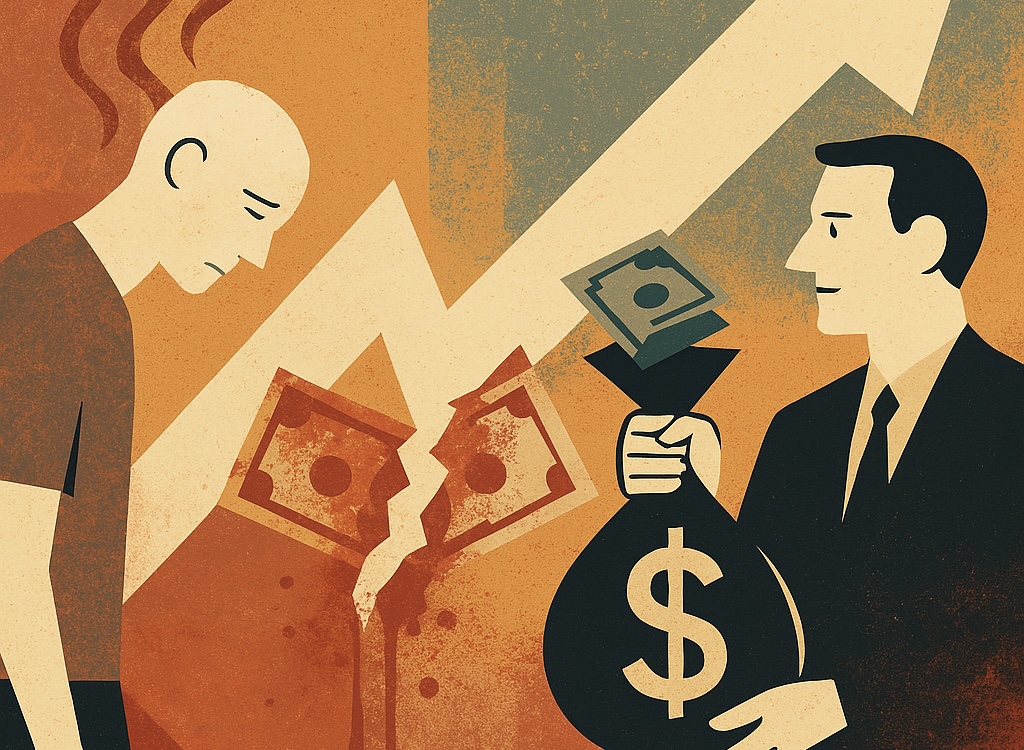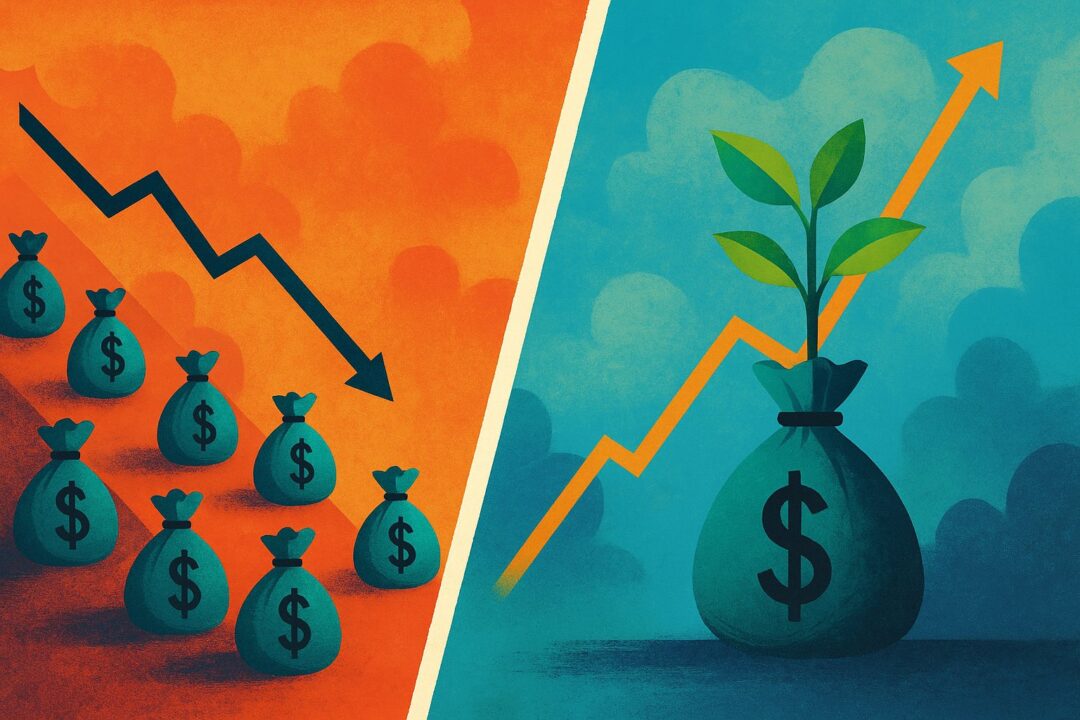When looking at high-growth companies—especially in tech or SaaS—traditional valuation metrics like the P/E ratio (price-to-earnings) can be misleading. These businesses often report low or even negative earnings as they reinvest heavily in growth, which can make their P/E ratios look inflated or even absurd.
In those cases, investors sometimes use a different shorthand: the Rule of 40. It’s a simple framework that tries to balance two competing forces—growth and profitability—to give a rough sense of how efficiently a company is scaling.
This post explores:
- Why P/E ratios can look distorted for growth companies
- What the Rule of 40 is, and how it’s used
- The kinds of businesses that can “pass” the Rule of 40—and why that still might not be enough
The P/E Ratio: Useful, but Limited
The P/E ratio is straightforward:
P/E = Price per Share / Earnings per Share
It tells you how much investors are paying for each dollar of a company’s earnings. A high P/E means a company looks expensive relative to current profits.
But here’s the issue: for many high-growth businesses, earnings are intentionally low, because the company is plowing money into growth—marketing, R&D, hiring, and expansion. Since those costs are subtracted before calculating earnings, reinvestment makes the “E” in the P/E small, and the ratio shoots up.
That doesn’t necessarily mean the stock is overpriced—it just means earnings today don’t reflect the company’s long-term potential or goals.
Why High-Growth Companies Often Have High P/E Ratios
Take a SaaS business that’s doubling its revenue every year. It might be operating at break-even or a loss, not because it’s failing, but because it’s intentionally spending to grow. This makes current earnings look tiny—and P/E look huge.
For companies like that, investors sometimes focus less on current earnings and more on growth efficiency: how well is the company balancing growth with its ability to someday be profitable?
The Rule of 40: A Quick Snapshot of Growth Efficiency
The Rule of 40 is a rule of thumb often used for software and other recurring-revenue businesses:
Revenue Growth Rate (%) + Profit Margin (%) ≥ 40%
It’s meant to recognize that some companies trade profit for growth, while others grow slowly but are highly profitable. If a company scores above 40, it’s often seen as operating in a healthy range—at least in terms of balancing growth and profitability.
Examples:
- 50% growth, -5% margin → Rule of 40 = 45%
Passes the Rule of 40. High growth offsets modest losses. - 20% growth, 25% margin → Rule of 40 = 45%
Also passes. Slower growth, but strong profitability. - 20% growth, 5% margin → Rule of 40 = 25%
Fails. Neither growth nor margins are strong enough to meet the benchmark.
Companies can get to 40 in very different ways—either by growing aggressively while barely breaking even, or by growing modestly with excellent margins.
Understanding Margins
Margins represent how much of a company’s revenue is left after expenses. Common types include:
- Gross margin: Revenue minus direct costs of making the product
- Operating margin: After overhead and operating expenses like marketing and salaries
- Net margin: After all costs, including taxes and interest
- EBITDA margin: Often used in Rule of 40 analysis; excludes non-cash and financing costs
When applying the Rule of 40, investors often use EBITDA margin or free cash flow margin because those are less noisy for growth-stage companies.
Why the Rule of 40 Doesn’t Guarantee Success
Even if a company hits a Rule of 40 score of 40% or more, that doesn’t mean it’s a durable or profitable business over the long term.
Here are a few things that can go wrong:
1. Scaling issues
Some businesses rely on constant high spending to maintain growth. If that spending stops, growth can collapse.
2. Customer churn
If customers don’t stick around, the company has to keep acquiring new ones—often at high cost—which can destroy profitability.
3. Stock-based compensation
A company might look profitable on paper (like adjusted EBITDA), but in reality, it’s issuing a lot of stock to employees. That can dilute long-term shareholders and mask real cash performance.
4. Lack of operating leverage
In some businesses, costs scale alongside revenue. Even as the company grows, it never becomes meaningfully more profitable.
So even if a business passes the Rule of 40, there’s no certainty that it will ever generate strong earnings or sustainable free cash flow.
Other Factors That Can Matter Just as Much
The P/E ratio and Rule of 40 are just two lenses among many. There are countless other considerations depending on the business, including:
- The strength (or weakness) of its competitive moat
- Industry dynamics, cycles, and disruption risk
- The company’s business model and scalability
- Competitive pressure and pricing power
- Customer retention and unit economics
- Liquidity, balance sheet health, and capital needs
- Broader market conditions, investor sentiment, and macroeconomic cycles
- Long-term potential and vision, and how believable it is
There’s no single metric—or even set of metrics—that can capture the full story. Every company is different, and every investment has trade-offs.
Final Thought
The P/E ratio can break down when applied to high-growth companies. The Rule of 40 helps add some context, but it’s still a simplification of a much more complex question: is this a good business, and can it eventually make real money at scale?
There are no shortcuts. Every company needs to be understood on its own terms.
Discover more from Brin Wilson...
Subscribe to get the latest posts sent to your email.



